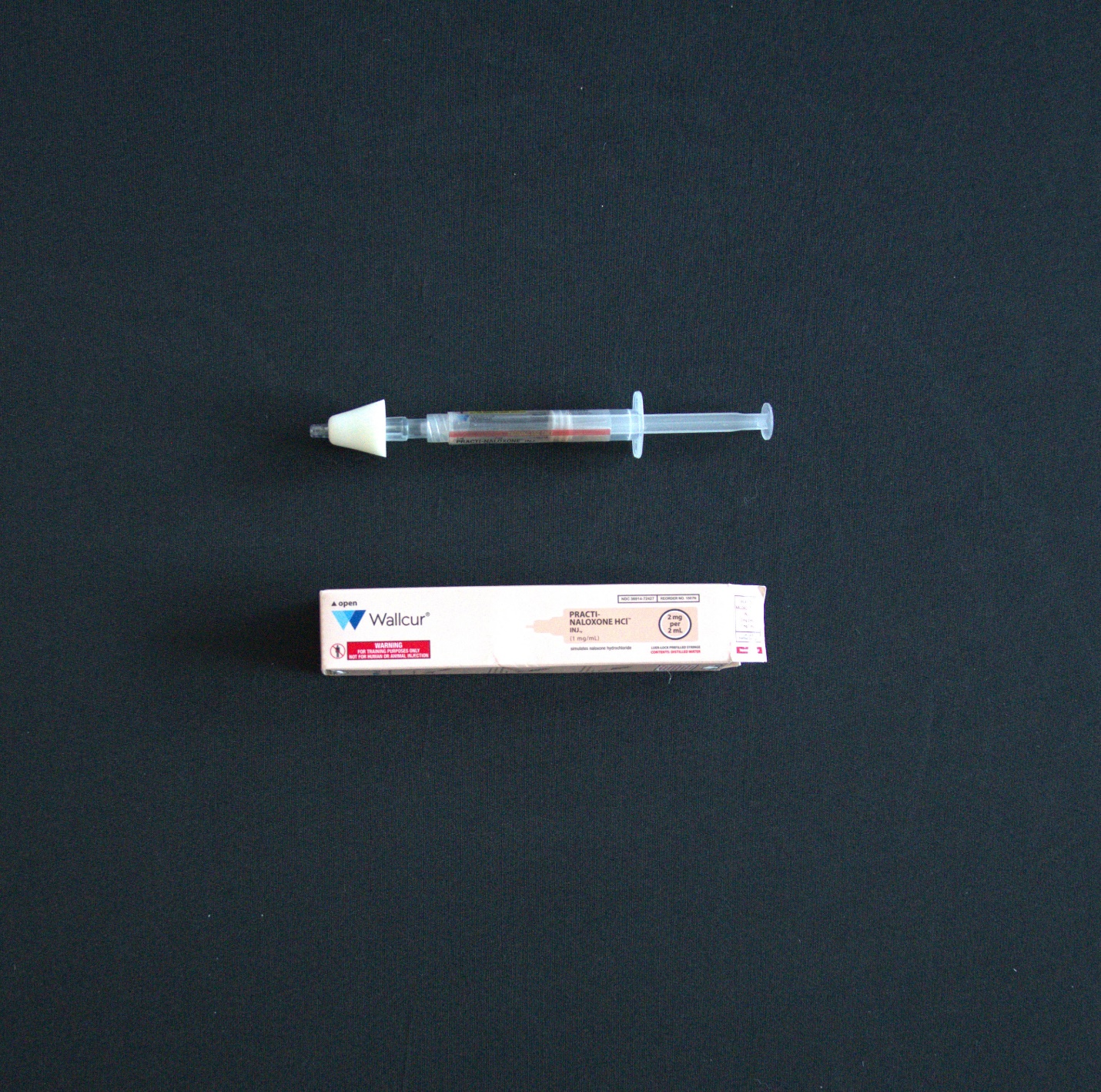Intranasal (IN) Medication Administration
The intranasal route for medication administration is extremely effective in providing life-saving medications without the inherent dangers associated with using needles in potentially unsafe situations. The main medication administered through the intranasal route by EMTs is naloxone hydrochloride (brand name Narcan). There are other medications that can be given IN however, none of them are in the EMT scope of practice.
To administer Narcan intranasally:
- Determine indication for Narcan administration
- suspected narcotic overdose – respiratory depression, altered mental status, constricted pupils.
- Attach nasal atomizer to Narcan preload (this with create a mist upon administration).
- Place atomizer at tip of one nostril.
- Administer ½ of the intended total dose by spraying the solution into the first nostril.
- Switch nostrils and administer the second ½ of the dose.
- Repeat steps 3-5 as necessary.

Naloxone Hydrochloride (Narcan)
Class: Opioid antagonist
Mechanism of Action: Competitively blocks opioid analgesics from their receptor sites, reversing their effects. Respiratory depression, sedation, analgesia, and euphoric effects will be reversed.
Onset: 2–5 minutes when given IM, and 2-3 minutes when given IN
Duration: 1-4 hours
Indications: Symptomatic opioid overdose (respiratory depression)
Coma of unknown etiology to rule out (or reverse) opioid depression
Contraindications: None
Precautions: Can precipitate severe withdrawal symptoms in individuals physically dependent on opioids. Use repeated small doses (0.5 mg IN) in patients taking chronic prescription narcotics.
The duration of some opioids is longer than naloxone and the patient must be monitored closely. Repeated doses of naloxone may be required. Patients who have received this drug should be transported to the hospital because coma may reoccur when naloxone wears off.
Side Effects: Nausea, vomiting (if administered rapidly). Narcotic withdrawal symptoms: dizziness, hypertension, tachycardia, sweating, nervousness, abdominal cramps, headache, weakness, joint and muscle pain, insomnia, and untreated pain
Dosage: 0.2–2 mg (IM, Nasal), repeated to a max of 8 mg. Naloxone is shorter acting than most opiates, repeated doses may be required
Larger doses may be required to reverse the effects of synthetic narcotics (propoxyphene, buprenorphine, butorphanol, nalbuphine, or pentazocine)
Not useful in cardiac arrest even if cardiac arrest was a result of respiratory arrest caused by narcotic OD. Naloxone will not restart an arrested heart.
|
Narcan Administration |
1 |
2 |
3 |
4 |
5 (instructor) |
|
Initials |
|
|
|
|
|
The original copy of this book resides at openoregon.pressbooks.pub/emslabmanual. If you are reading this work at an alternate web address, it may contain content that has not been vetted by the original authors and physician reviewers.

